vendredi 11 septembre 2015
Lorenzo signe un nouveau record du circuit à Misano / Record-breaking Lorenzo heads Friday’s practice
L’Espagnol et son compatriote Marc Márquez ont de nouveau été clairement plus rapides que leurs concurrents vendredi après-midi.
Deuxième à 0.094s de Marc Márquez (Repsol Honda) le matin alors que les autres pilotes étaient à plus d’une demi-seconde du Champion en titre, Jorge Lorenzo (Movistar Yamaha MotoGP) a réussi à prendre l’avantage vendredi après-midi lors de la seconde séance du Grand Prix TIM de Saint-Marin et de la Riviera di Rimini.
Sur une YZR-M1 équipée d’ailerons latéraux à l’avant du carénage, le Majorquin a établi le nouveau record absolu du circuit en 1’32.871, soit 0.044s de mieux que l’ancien record, signé par Márquez en 2013. Ce dernier a conclu la deuxième séance à tout juste 0.053s de Lorenzo et avait déjà eu l’occasion de rouler sur le nouveau revêtement de Misano lors d’un test privé organisé cet été.
Lui aussi présent pour ces essais privés, son coéquipier Dani Pedrosa (Repsol Honda) a terminé troisième, à 0.387s de Lorenzo, devant les Italiens Andrea Dovizioso (Ducati) et Valentino Rossi (Movistar Yamaha MotoGP), qui finissait à 0.598s de son coéquipier, sur qui il compte douze points d’avance au classement général.

Pol Espargaró (Monster Yamaha Tech3), Danilo Petrucci (Octo Pramac Racing), à domicile après s’être offert son premier podium à Silverstone, et Bradley Smith (Monster Yamaha Tech3) figuraient eux aussi dans le Top 8.
Troisième le matin, Michele Pirro, en wildcard pour Ducati, a conclu la journée en neuvième position, devant Cal Crutchlow (LCR Honda), qui étaient avec Alex de Angelis (E-Motion IodaRacing Team), Andrea Iannone (Ducati) et Karel Abraham (AB Motoracing) l’un des quatre pilotes à chuter au cours de cette séance.
De retour sur un circuit où il avait brillé en WorldSBK, Loris Baz (Forward Racing) s’est classé deuxième pilote Ipen derrière Eugene Laverty (Aspar MotoGP Team) tandis que Mike Di Meglio (Avintia Racing) a fini 22e.
Suite des essais libres samedi à 9h55.
Cliquez ici pour accéder aux résultats.
Jorge Lorenzo utilised winglets on his M1 and set the fastest ever lap by a motorbike around Misano ahead of Marc Marquez and Dani Pedrosa.
For the fourth race in a row it was Movistar Yamaha’s Jorge Lorenzo and Repsol Honda’s Marc Marquez who filled the top two places on the combined timesheets on Friday. This time it was Lorenzo who finished on top of the pile as the Spaniard took advantage of the new track surface and glorious conditions (Track temperatures reached 38˚C) to set the fastest ever lap by a motorcycle around the 4.2km Misano World Circuit Marco Simoncelli.
Lorenzo set a 1’32.871 in FP2 whilst utilising a medium front and medium rear tyre on a day that saw nearly all riders improve in the warmer conditions of the afternoon. The Majorcan - who is currently second in the championship standings - broke Marquez’s 2013 Pole record in the process (1’32.915). FP2 also saw Lorenzo debut ‘winglets’ on his Yamaha M1 and they seemed to have a positive affect as he immediately went quicker.
Lorenzo ended the day just 0.053s ahead of Marquez, who had earlier topped FP1. Marquez preferred a hard front and hard rear combination for his flying laps at the end of FP2 in a session that once again saw the Spanish duo a cut above the rest.
Repsol Honda’s Dani Pedrosa (+0.387s) completed the provisional front row but was over three-tenths off the pace of his teammate Marquez. Andrea Dovizioso (+0.420s) on the Ducati Team GP15 was in fourth ahead of the man who leads the championship standings by 12 points, Valentino Rossi (+0.598s). Rossi did not sport the ‘winglets’ on his M1, but expect to see them make an appearance in FP3, as he preferred a hard front and rear tyre combination like Marquez.
Monster Yamaha Tech 3’s Pol Espargaro (+0.681s) was the leading Satellite rider in 6th, just one-thousandth of a second ahead of the Octo Pramac Racing Ducati of Danilo Petrucci.
Bradley Smith (Monster Yamaha Tech 3) finished the day in 7th, with Ducati Team’s test rider Michele Pirro (wildcard) and Cal Crutchlow (LCR Honda) completing the top ten, despite the latter crashing at the start of FP2.
EG 0,0 Marc VDS rider Scott Redding was 11th, with Aleix Espargaro (Team Suzuki Ecstar) in 12th and less than a second behind Lorenzo, while Andrea Iannone (Ducati Team) had to settle for 13th after also crashing during the session.
Eugene Laverty (Aspar MotoGP Team) ended the day in 15th as the leading Open class rider, with Jack Miller (LCR Honda) and Nicky Hayden (Aspar MotoGP Team) in 19th and 22nd respectively.
Check out the combined MotoGP™ FP1 & FP2 times; FP3 kicks off at 9:55am local time on Saturday in Misano.
WRC Rally Australia 2015 WRC, Australie, étape 1 : Latvala vire en tête / Latvala on top after Leg 1
Dani Sordo, Kris Meeke, et enfin Jari-Matti Latvala (VW/Michelin) se sont succédé en tête du Rallye d’Australie. A l’issue de la première journée, le Finlandais compte deux secondes d’avance sur Meeke et 4s6 sur Sébastien Ogier.
La première étape du Rallye d’Australie, qui comptait huit spéciales, a vu trois pilotes et trois marques différentes se succéder en tête.
C’est d’abord Dani Sordo, non nominé par Hyundai pour marquer des points Constructeurs, qui a profité de sa bonne position sur la route pour remporter les trois premières spéciales du jour.

Mais l’Espagnol a cédé les commandes au Britannique Kris Meeke (Citroën) à l’issue de l’ES4. A mi-journée, le pilote Citroën devançait les Hyundai i20 WRC de Sordo et Paddon, et les trois Volkswagen Polo R WRC –Mikkelsen, Latvala, Ogier - contraintes de balayer les pistes. Tout ce petit monde se tenait à moins de 12 secondes.
Les pilotes Volkswagen ont haussé le rythme dans l’après-midi, sur des pistes un peu plus nettoyées. Jari-Matti Latvala a gagné trois spéciales consécutives pour revenir peu à peu sur Meeke. Le Finlandais a fini par prendre les commandes de l’épreuve à l’issue de la dernière spéciale du jour remportée par Ogier. Le double champion du monde est 3e à moins de 5 secondes du leader.
C’est même très serré dans le top-5 puisque Latvala, Meeke, Ogier, Mikkelsen et Sordo se tiennent en moins de 16 secondes. Demain (samedi), Nambucca (50,80 km) sera à parcourir à deux reprises, avant une spéciale nocturne pour conclure l’étape. Sébastien Ogier ne devrait plus ouvrir la route car Stéphane Lefebvre (Citroën) pourrait repartir en Rally2 après avoir tapé une pierre dans l’ES8.
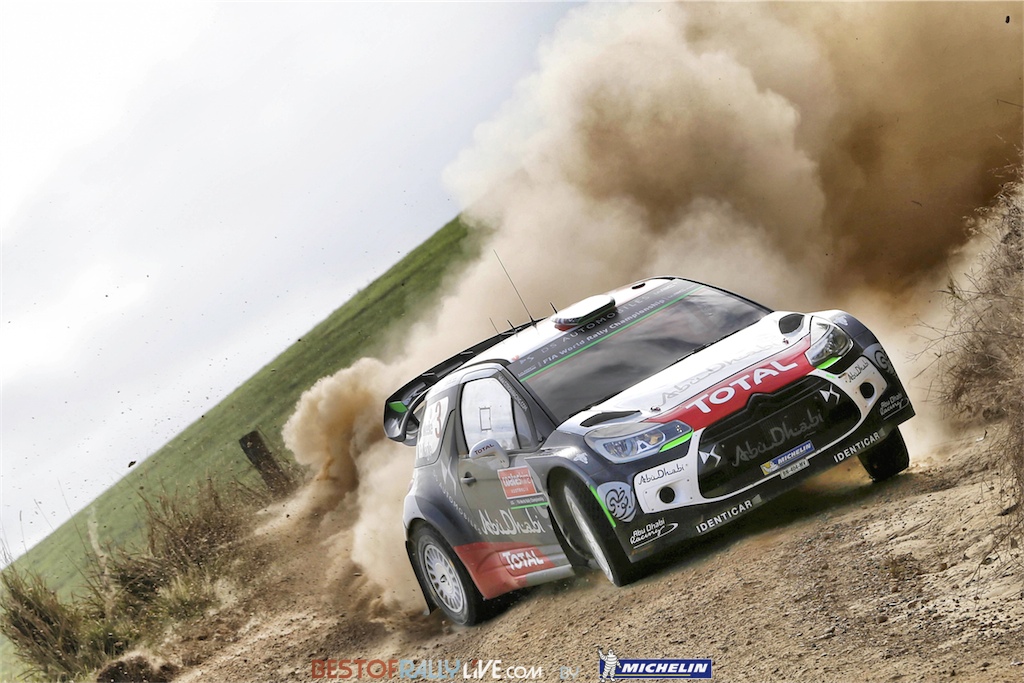
Il n’y a pas de Ford Fiesta RS WRC aux avant-postes. Ott Tanak et Elfyn Evans, qui furent les seuls à mixer pneus hard et soft ce matin (tous les autres en Michelin LTX Force S4), pointent aux 8e et 9e places. Si l’Estonien n’est qu’à 40 secondes du leader, le Gallois se trouve plus de deux minutes après une touchette et un décoincement du pneu avant droit dans l’ES4.
En WRC-2, Nasser Al-Attiyah (Skoda/Michelin) compte déjà 50s3 d’avance sur Protasov (Ford) et près d’une minute et demie sur Al-Kuwari (Ford). L’Australien Scott Pedder (Ford) s’est arrêté dans l’ES2 (suspension).

Dani Sordo, Kris Meeke and Jari-Matti Latvala (VW/Michelin) all took turns on top in Australia today. The Finn completed the leg in front, ahead of Meeke (+2s) and Sébastien Ogier (4.6s).
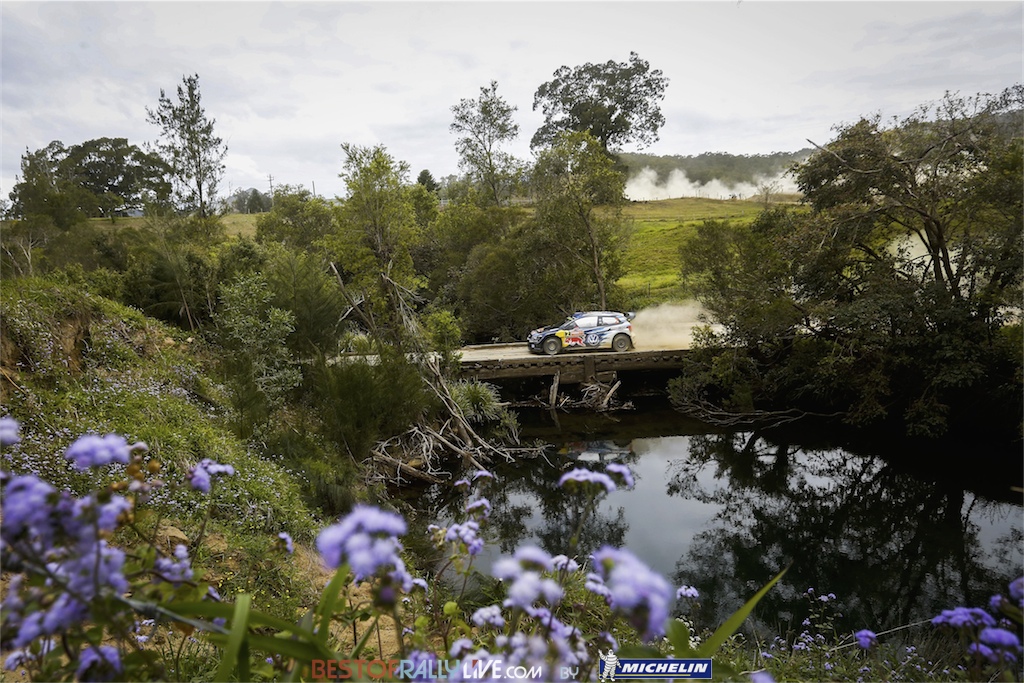
The opening day of the 2015 Rally Australia featured eight stages and saw three drivers representing three different makes share first place.
The first driver to emerge on top was Dani Sordo. Although not nominated by Hyundai as eligible to score Manufacturers’ points, he took advantage of a favourable start order to claim the first three stages.
The Spaniard then ceded control to Meeke (Citroën) who led at the lunchbreak, ahead of Sordo and Paddon. The two Hyundai i20 WRC runners were in turn chased by Volkswagen’s Mikkelsen, Latvala and Ogier who had the handicap of running at the front of the field. These seven drivers were split by less than 12 seconds.
Volkswagen’s trio then upped the pace for the cleaner second passes. Jari-Matti Latvala won three stages in a row to close the gap to Meeke. He eventually found a way past on the day's final test which was won by Ogier who has fought his way back to third spot, less than five seconds short of his Finnish team-mate.
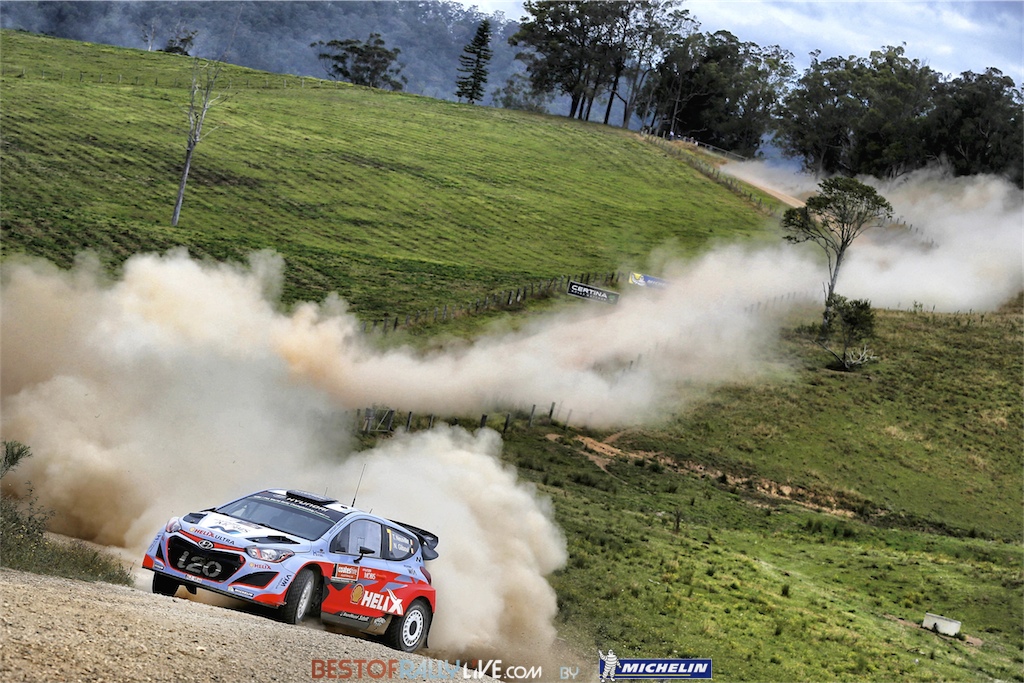
Indeed, the top five (Latvala, Meeke, Ogier, Mikkelsen and Sordo) are blanketed by less than 16 seconds ahead of Saturday’s action which includes two attempts at ‘Nambucca’ (50.80km), plus a night-time test to conclude the leg. Ogier will no longer be first on the road since Stéphane Lefebvre (Citroën) is expected to re-start under the Rally2 ruling after clouting a rock on SS8.
 Ford Fiesta RS WRC runners Ott Tanak and Elfyn Evans were the only drivers to run a combination of hard- and soft-compound tyres this morning (all the others ran the soft Michelin LTX Force S4) and are back in eighth and ninth places. The Estonian is only 40s adrift, but the Welshman is more than two minutes back after suffering an off and an unseated front-right tyre on SS4.
Ford Fiesta RS WRC runners Ott Tanak and Elfyn Evans were the only drivers to run a combination of hard- and soft-compound tyres this morning (all the others ran the soft Michelin LTX Force S4) and are back in eighth and ninth places. The Estonian is only 40s adrift, but the Welshman is more than two minutes back after suffering an off and an unseated front-right tyre on SS4.
The WRC2 pacesetter Nasser Al-Attiyah (Skoda/Michelin) is already 50.3s clear of Protasov (Ford) and almost a minute-and-a-half ahead of Al-Kuwari (Ford). Australia’s Scott Pedder (Ford) stopped on SS2 (suspension).
London calling for RM Sotheby’s

On the evening of 7 September, Max Girardo will bring the gavel down on 76 lots at the RM Sotheby’s London Sale in Battersea, headed – as with last year’s auction – by a very special Ferrari 250 GT ‘Tour de France’. We’ve browsed the catalogue and selected some highlights…
We’ve already covered two rather yellow stars of the show – the Alfa Romeo RZ (£50,000-70,000) and Bugatti EB110 SS (£600,000-770,000) – in the magazine. But there’s plenty more to whet the appetite at the RM Sotheby’s annual (and ever-popular) London sale next week. Take the headline lot, a 1958 Ferrari 250 GT ‘Tour de France’, for example – an early single-louvred car with matching numbers and period competition history, to boot. Eligible for almost any historic event, be it on or off the track, it’s estimated to fetch a strong £4.5m-5.5m.
Pristine ponies
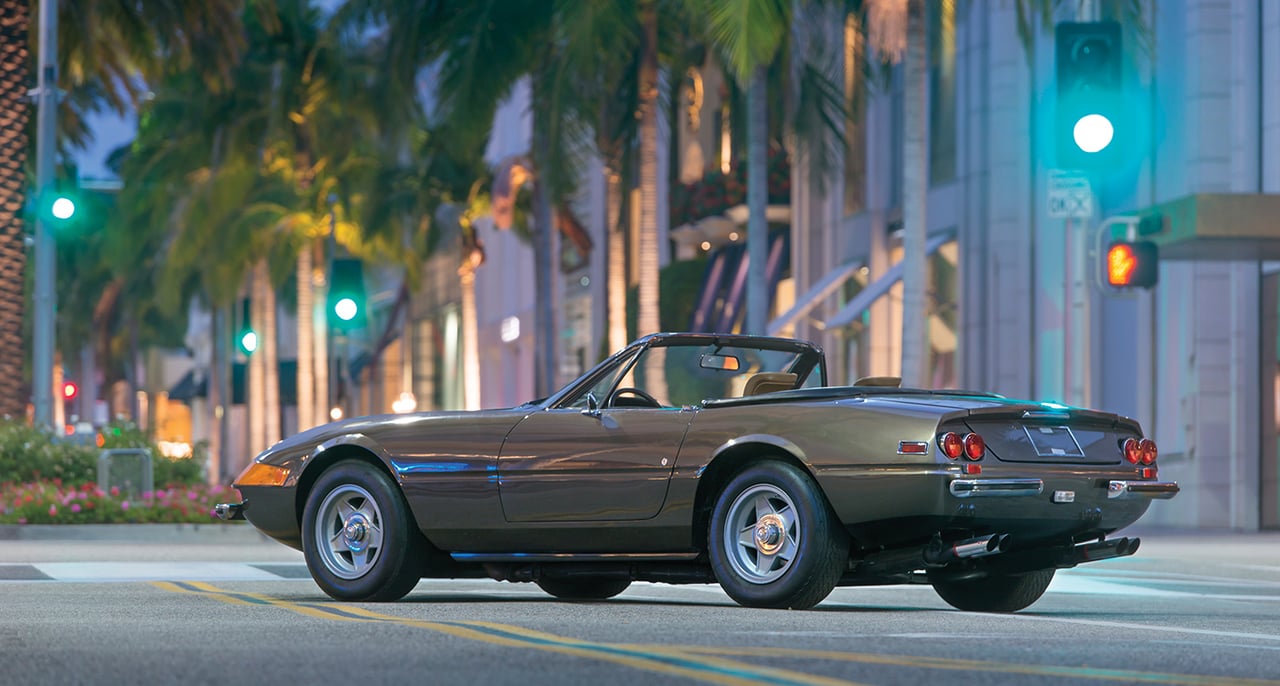
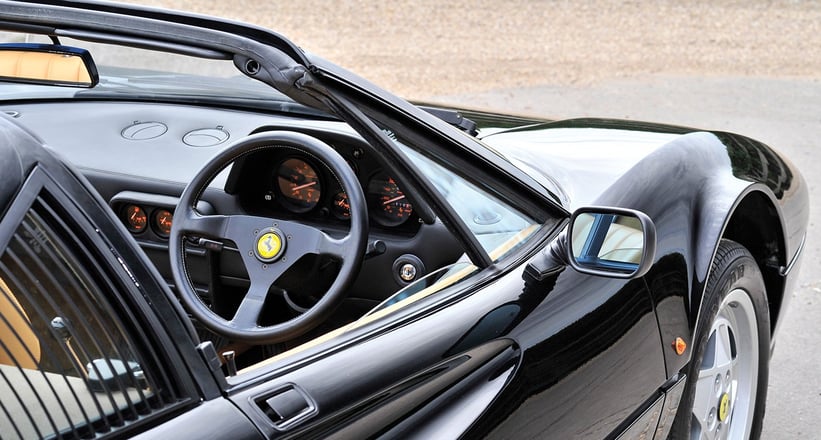
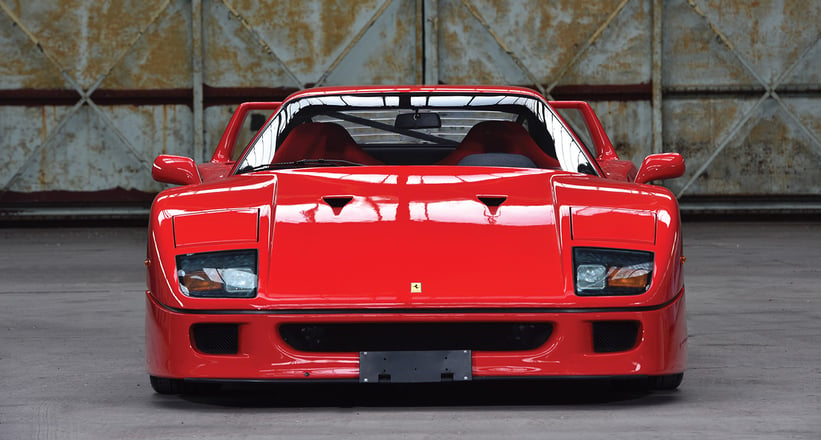
Ferraris – particularly those with outrageously low mileage – appear to be the flavour of the auction, in fact. Hot on the TdF’s heels is a genuine 1973 Daytona Spider (est. £2m-2.4m), boasting not just a scant 3,800 miles on the clock and Classiche certification, but also a truly elegant colour combination: Marrone Colorado over Beige Scuro. Then there’s the ‘as new’ right-hand-drive 328 GTS, which has covered a scarcely believable 556 miles (sacrilege?) and is estimated at an almost-as-startling £170,000-200,000. A desirable (and rare) manual 612 Scaglietti (£80,000-100,000) and a one-owner F40 (£780,000-900,000) are also of note.
Seldom-seen classics
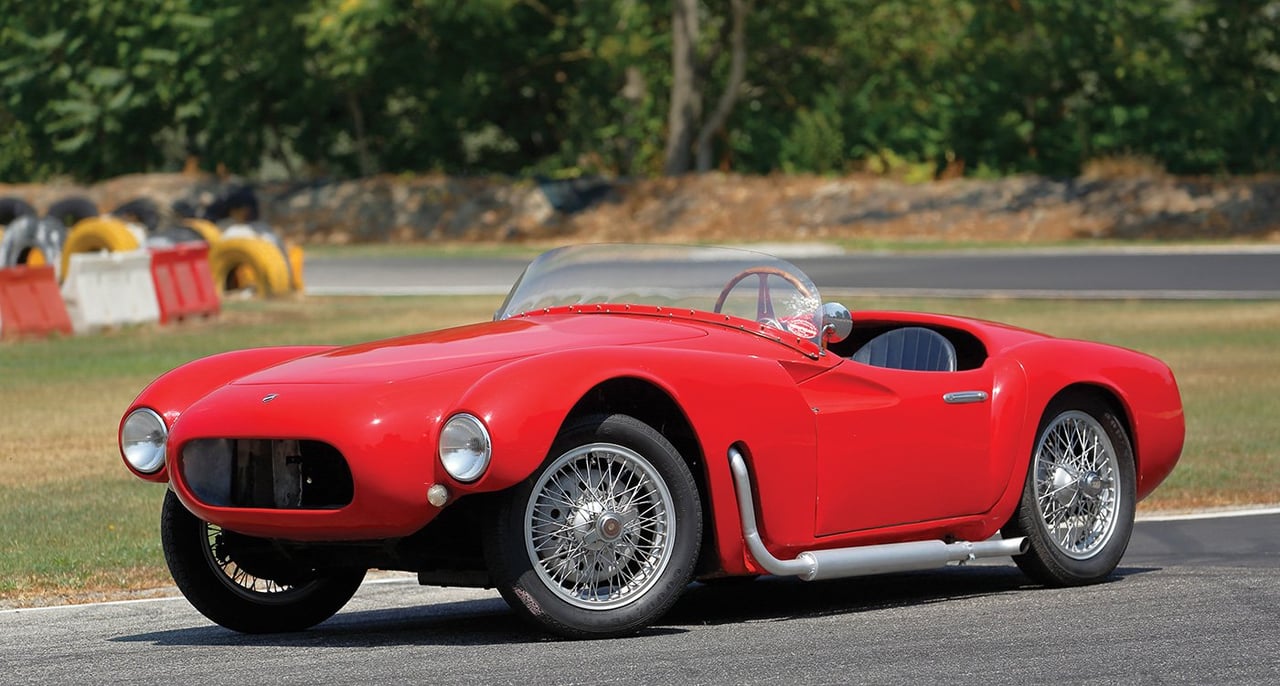
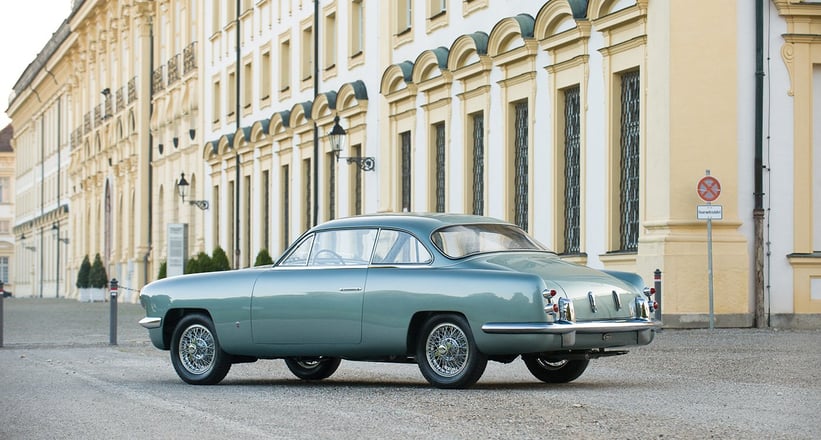
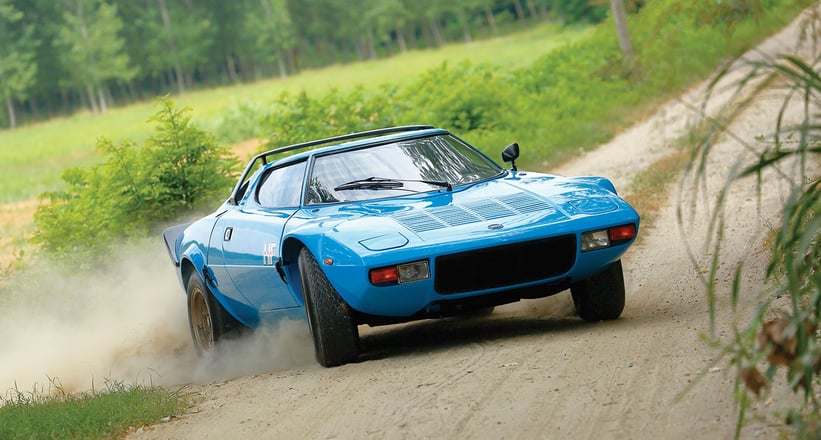
Two less familiar Italian classics, but both with sought-after Mille Miglia eligibility, caught our eye: the charming Ghia-bodied 1953 Cisitalia 505 DF (£130,000-150,000) and the 1955 Moretti 750 Sport Barchetta (£175,000-225,000).
Judging by the photo, the matching-numbers Lancia Stratos HF Stradale (£270,000-320,000) looks to be a riot to drive, while those after an eligible historic racer with fantastic provenance should look at the rare MGA Twin Cam (£120,000-160,000).
Fame fascination
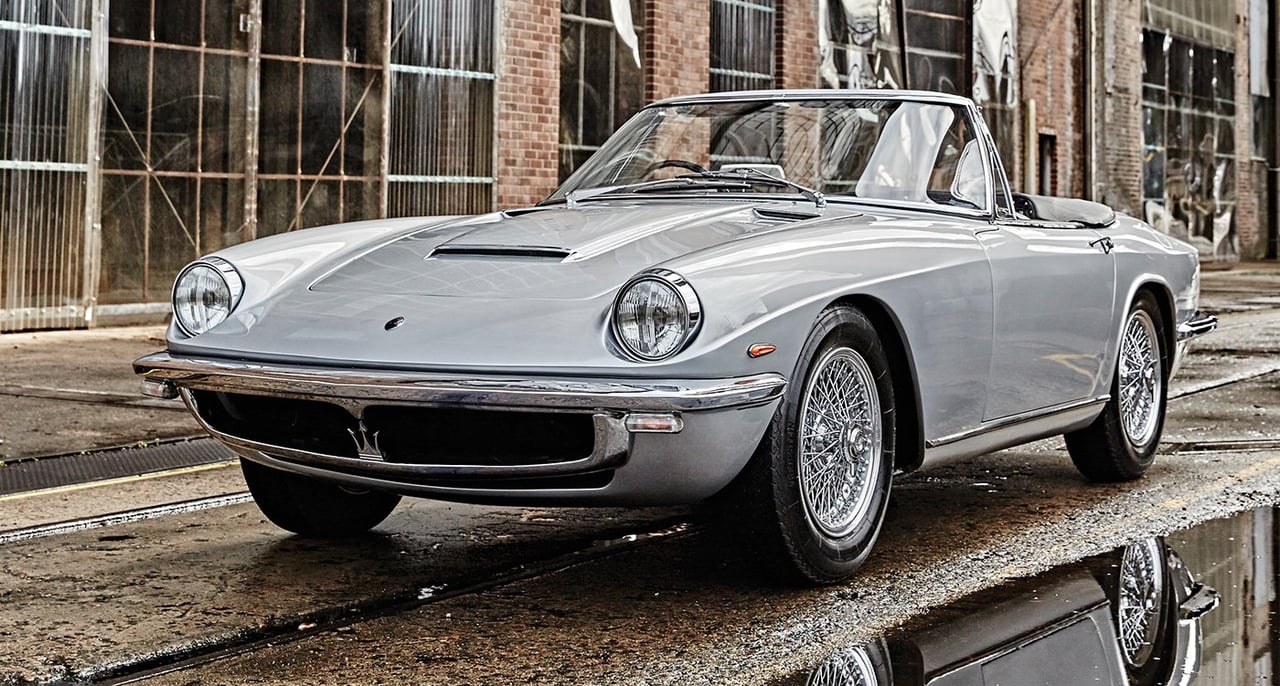
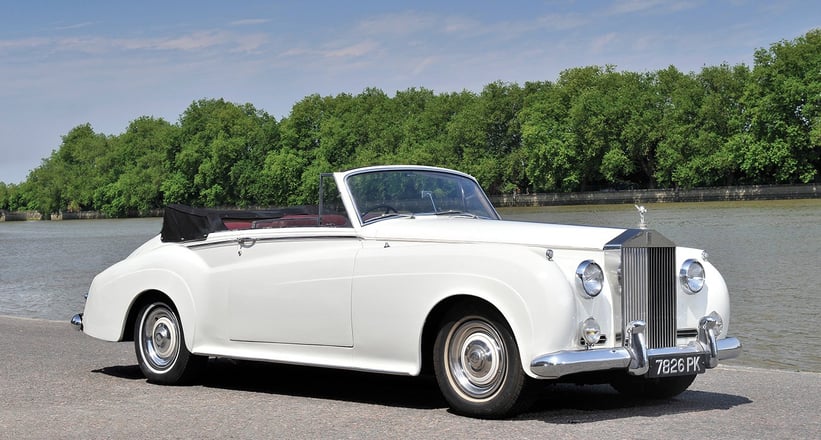
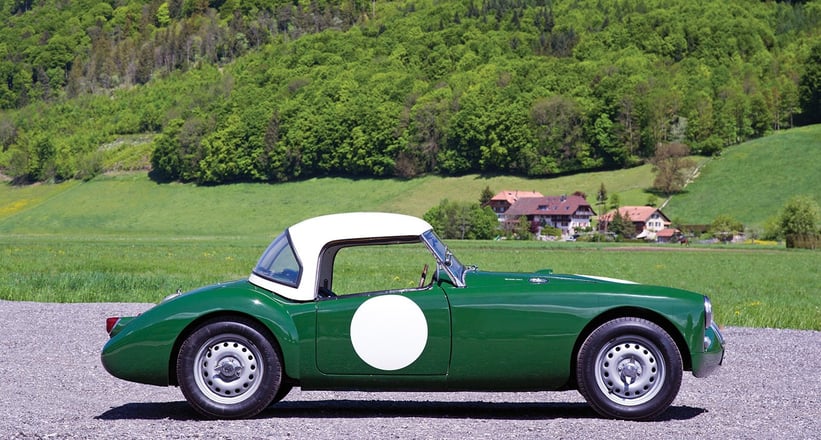
If celebrity provenance is something you look out for, how about the Rolls-Royce Silver Cloud I Drophead Coupé offered by the famous James Bond set designer Sir Ken Adam (£175,000-200,000), or the quite exquisite and highly original Maserati Mistral Spyder, formerly owned by the ‘English Marilyn Monroe’, Diana Dors (£475,000-575,000)?
Black and gold
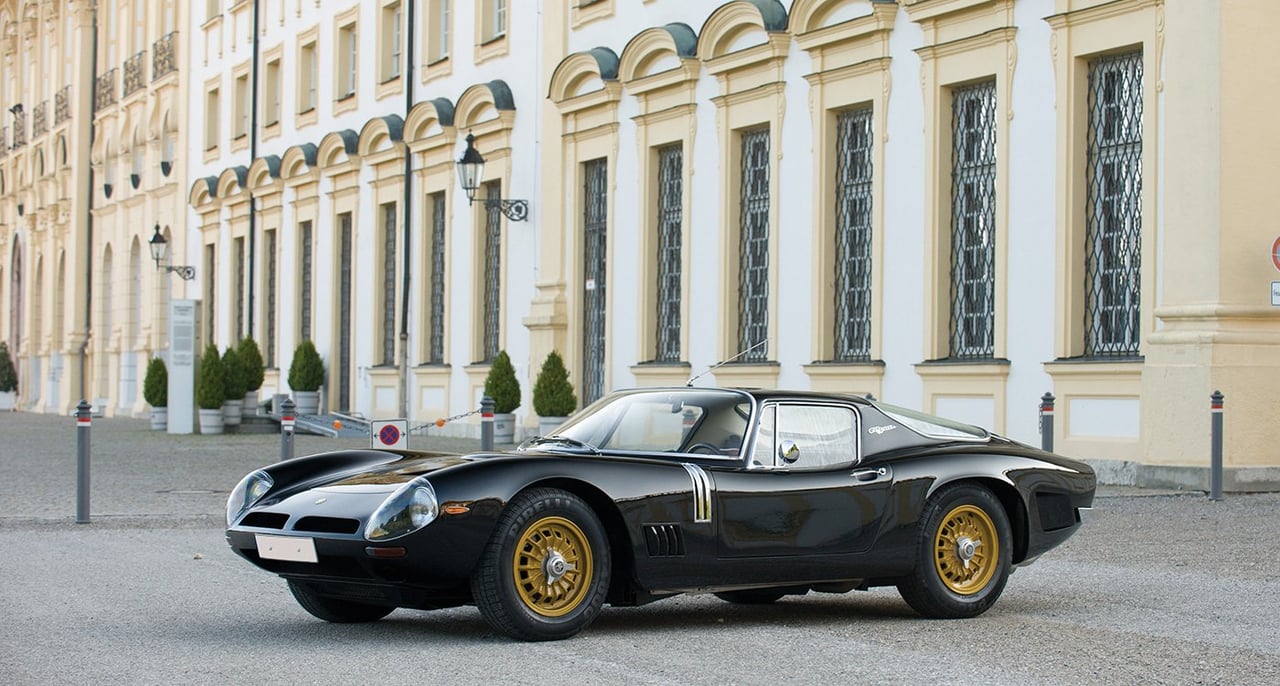
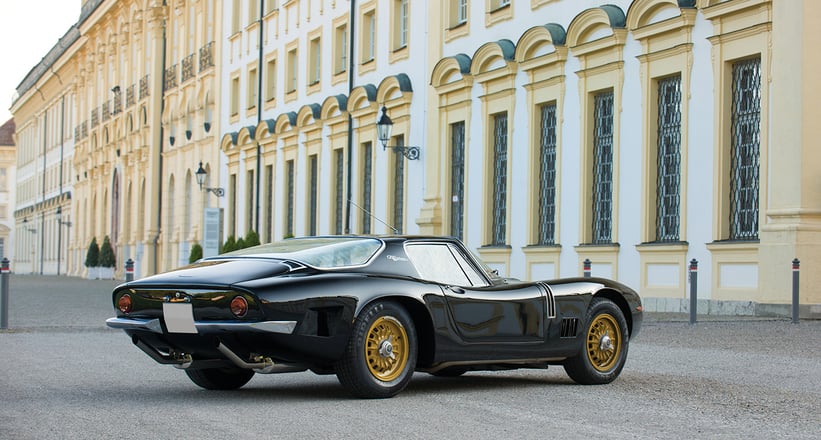
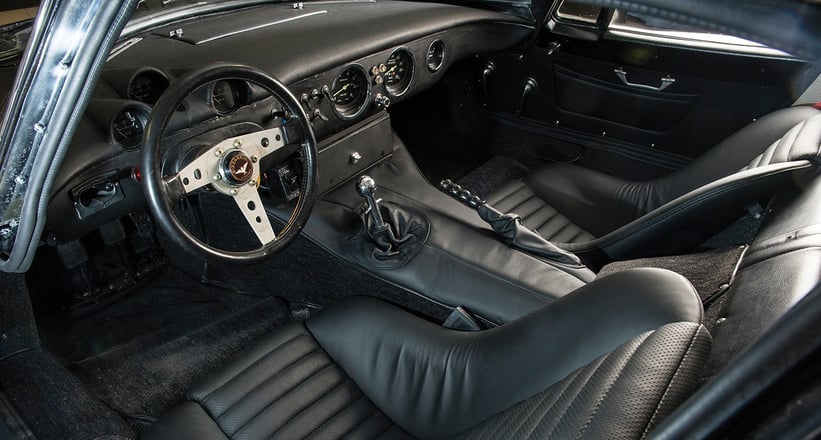
Which car would we most like to drive home (through Central London, naturally)? It simply has to be the black Bizzarrini GT 5300 Strada, estimated at £495,000-700,000. It might not have its original engine, but its history is well documented and, well, just look at it…
Photos courtesy of RM Sotheby's
You can find the full catalogue for the RM Sotheby’s London Sale, to be held on 7 September at Battersea Evolution, listed in the Classic Driver Market.
Moto Guzzi Le Mans – Kaffeemaschine
Written by Marlon Slack.
Kaffeemaschine (pronounced, erm… ‘Kaffeemaschine’) is a Hamburg-based shop that specialises in some of the most beautiful, understated Moto Guzzi builds we’ve seen. All their bikes are lean, stripped back and gorgeous but none more so than their latest build, ‘15’. As pretty as it looks on the outside, the real beauty of Kaffeemaschine 15 is within, much like a jam doughnut or a submarine full of supermodels – cradled in that SP1000 frame is a worked Le Mans MkIII powerplant. It’s stunning, immaculately finished, quick and reliable. What’s not to like?
Head of the workshop, Axel, slated reliability as the first goal of his fifteenth build, aiming to keep the bike as a daily rider. But when trying for reliability they also gave the engine a little more oomph. First to get worked over were the cylinders, with the 850cc units ditched in favour of 1000cc bores. The heads were ported and new valves and springs were mounted under a Schrick cam, while the bottom end had the crank balanced, clutch and flywheel lightened and a new oil tank from a late-model Moto Guzzi Bellagio. The new arrangement fires into life with a new electronic ignition and Valeo starter, with all the wiring redone and neatly hidden away – the space in between the sidecovers is now empty and holds a leather bag that Axel can use to store gloves, registration papers or letters from adoring fans.
The rest of the work that has gone into Kaffeemaschine is easier to spot. The seat is hand shaped and made by Axel himself, and sits atop a shortened and de-tabbed SP1000 frame that has been worked over so nicely it’s hard to spot its original sport touring roots. The tank is a restored and re-sealed LM 1 unit that helps take some of the angles away from the inherently 80’s appearance of the original MKIII gas tank. The exhaust and various stainless and alloy fittings were also made in-house, including the screen and mudguards.
As well as the frame, the wheels have also been lightened. The housing of the rear drive and wheel hubs and flanges have been drilled and trimmed and it wears light alloy rims mated to stainless steel spokes, with the sensible combination of Bridgestone BT45 tyres and stainless steel brake lines helping the Guzzi stop.
All in all Axel is ecstatic with the way the new bike rides, especially considering the original Guzzi, which is no lightweight, now tips the scales at only 189 kilograms. The result, he says, is fantastic. ‘It really handles like a 600cc sports bike, especially due to the weight reduction and a modified, shortened Yamaha R6 forks and adjustable Wilbers shocks.’ Axel had finally built a café that he would be able to keep for himself and ride every day. But sadly, the bike wasn’t going to stay in his garage for long.
‘Charles visited me in my workshop last winter to get an idea of my work and he saw the half-finished bike’ Axel says. And nearly twelve months passed before he heard from the customer again. ‘He called me a couple of weeks ago, to find out if it was finished and if I was willing to sell. Which I was. Kind of…’ As happy as he must be to get the bike out the door and to start work on a new project, the sale of #15 threw a spanner in the works. ‘It was just before I had planned to take it down to Italy and the Alps over the holiday to really make it mine!’
I’d say he should be kicking himself, but knowing the history of fine work Axel and the team at Kaffeemaschine do, their next ride will be even better.
via PIPEBURN
WHY TRAVEL WITH A ROOF TOP TENT? AND WHICH ONE?
Coen Wubbles of Landcruising Adventure walks us through the finer points of rooftop sleeping.
by Coen Wubbles Photography by Coen Wubbles
One of our important purchases before setting off in 2003 was a roof top tent. We had seen images of it and it looked like the perfect bedroom for our home on wheels. So, we headed to several stores and compared Eezi Awns, Howling Moons, Hannibals and a couple of others.
All were canvas roof tents, like you see in the picture above. We had never heard of hard-shell roof tents, or the nowadays-popular integrated version. We learned about their existence when meeting other overlanders (on the road or at the annual Overland Reunion in the Netherlands). Below you’ll find info we gathered on pros and cons of the different types, what they have in common and what makes them unique.
As I climbed in one roof top tent after the other, in stores featuring all kinds fancy off-road stuff and camping gear, I concluded that the differences among the canvas versions weren’t big. We didn’t particularly favor one over the other. Prices were all in the same range – incredibly high – so money wasn’t a deciding factor either.
Well, actually, it was. The reason to buy an Eezi Awn was because we didn’t carry a bag with gold and were offered a new tent for a very good price from an overlander who had shipped a couple of them with his vehicle in a container from South Africa (where the Eezi Awn roof tent is produced) after a six-month road trip. Check out some good alternatives like the ARB Series III, Sand Rooftop Tent or the Tuff Stuff Roof Top Camping Tent with annex changing room. Also sporting an annex are the Pak-Meister BaseCamp Roof Top Tent and the Camco Roof Top Tent.
Types of Roof Top Tents
Roof tents are also called roof top tents or car top tents. They can be divided into three main groups:
•Canvas tents that open in a clamshell-like manner. Well known brands are Eezi-Awn (top picture) and Howling Moon.
•Hard shell rooftop tents that also serve as the car’s roof, like Columbus and Maggiolina. It works on a system of internal gas rams and is therefore put up and taken down even faster.
•A combi of the two: a canvas tent but one that is integrated in the roof of the car. It pops open on one side (generally the back), giving you a place to stand up straight in your Land Cruiser or similar-sized vehicle.
What these tents have in common:
•The mattress, blankets and pillows can be stored inside the tent when folded up, which saves a lot of space in the vehicle.
•Sleeping high off the ground in a tent with mosquito netting on all sides allows for maximum ventilation, creating maximum comfort in sultry regions – or at least less uncomfortable nights than when sleeping inside the car or in a tent on the ground.
•Roof top tents can be a bit of a problem in the southern triangle of South America (Patagonia) where there is often too much wind for a roof tent. It has led to many sleepless nights, and we often slept inside the Land Cruiser instead.
Disadvantages of Roof Top Tents
Whereas prices of regular tents vary greatly and are within the reach of the lowest-budget traveler up to the most extravagant traveler who wants to camp in comfort, the cheapest (canvas) roof top tent starts at 1700 US dollars, although I understand that they are cheaper in South Africa.
To get the integrated-roof version, you will have to shop around to get the job done for a reasonable price. We never have so I can’t share any experience on the subject. (Maybe other travelers want to chime in here? Feel free to share your experiences below in the comments).
Another issue is weight (depending on material and size – our roof top tent weighs around fifty kilos). Therefore, as many overlanders will carry more on the roof than just a tent, your vehicle needs a strong roof rack. As we learned quickly in the journey, having too much weight to the roof caused window stiles to break, or the Land Cruiser to sway more easily on rough tracks.
Our Experiences With Our Eezi-Awn Roof Tent
What we like about it:
•The comfort, the breeze.
•When camping for a longer period of time I don’t have to clean up the mess inside the vehicle each day because I need to make the bed.
•The chances of ants, scorpions, snakes or other creepy-crawlers entering the tent are zero (this compared to a tent on the ground).
•It’s a great spot for viewing wildlife. We especially experienced this in the wetlands of the Pantanal where we would wake up for sunrise and watch all the birds and other animals approach the water for breakfast and a bath from a much closer range than had we sat outside.
What we don’t like about it:
•We were not impressed with the durability of the mattress (replaced in Vietnam after 3 years with one that’s still fine 8 years later, see below).
•The mosquito netting doesn’t properly close in corners (we stuff them with old T–shirts).
•Serious leakage problems after 4 years.
We really love sleeping in the roof tent but we are not so sure about the price-quality Improvements on the Roof Tent.
Improvements on the Roof Tent
As were preparing our farewell party in the Netherlands, I told Coen I wanted to have the roof tent up to show it to people. Fortunately so, because only then (one week before departure) we discovered that the ladder was too short! Because of the extra 25-centimeter aluminum layer to heighten the Land Cruiser’s roof, the ladder was insufficient. A neighbor of mine welded an extension, which has worked perfectly.
The outer layer of the tent, the part that covers the entrances on both sides, tends to curl up. This is a problem in case of slanting rain, which then enters the tent. I glued velcro
on the wooden sidebar of the floor and sewed Velcro on that layer. Problem solved.
We emailed Eezi Awn when the leaking problems started, which couldn’t be solved with any first-quality impregnation liquid I bought in the Netherlands. We have to admit: they do know about after-sales service. They sent impregnation liquid to South America twice, free of charge, even though by then we had used the tent for more than four years. The waterproofing liquid helped for a while but nowadays the tent is a good–weather option only.
Three years after our departure we were in Vietnam and the mattress needed to be replaced. The region is known for their rubber plantations in we found a tiny shop that sold pure latex mattresses for a reasonable price. They might be a bit heavier than the original, but boy did this enhance our sleeping experience.
One last tip: When the weather is hot, we bring the small oscillating fan which normally hangs above the driver’s seat, to the tent. With an extension cord this works perfectly.
A one-off Rolls-Royce Phantom VI for the Consul

In the early 1970s, Italian master-craftsman Pietro Frua was commissioned by H.E. Consul Simon van Kempen of Switzerland and Monaco to create a one-off convertible based on the already exclusive Phantom VI. The result was six metres of pale green, sun-welcoming exuberance…
Bonhams claims the unique Rolls-Royce to be one of ‘the largest and most imposing two-door convertibles existing in the world today’. That’s a statement we can second, after initially mistaking it for a ‘Yank tank’ resting under tarpaulin during our visit to the Frederiksen Collection earlier this year.
Imposing presence
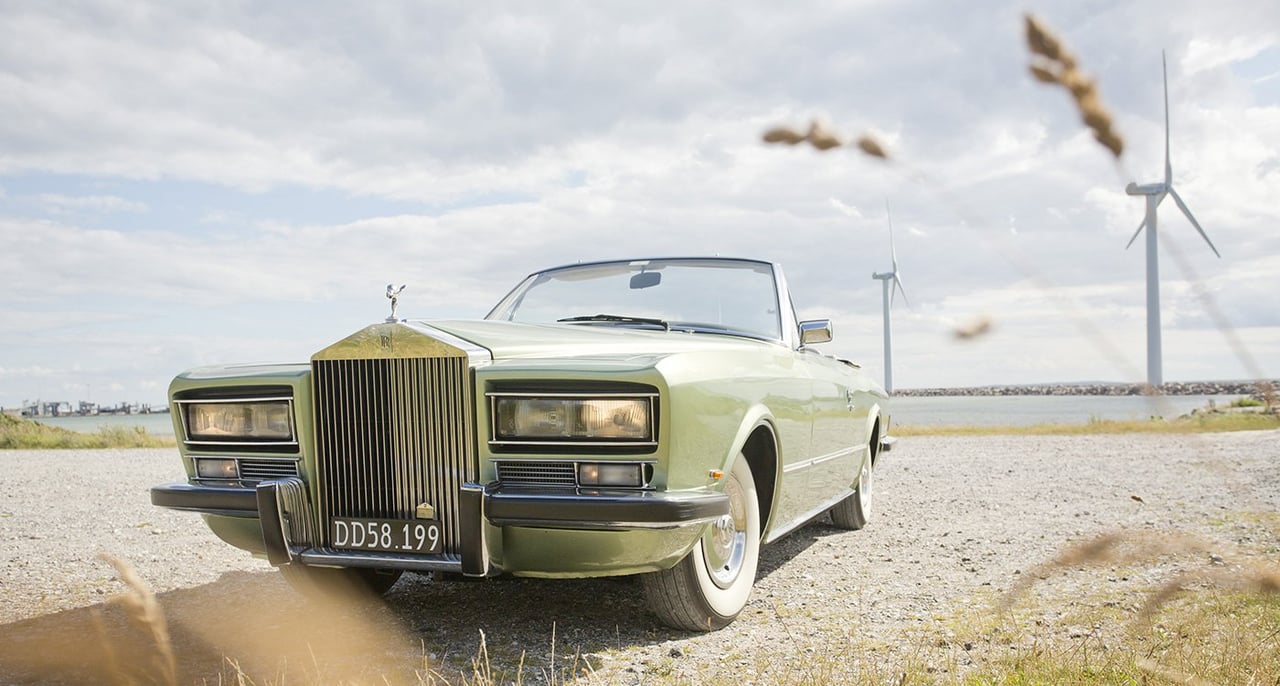
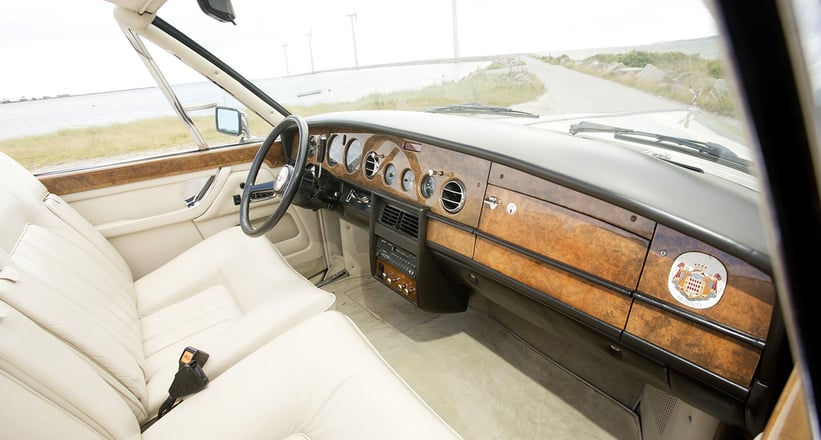
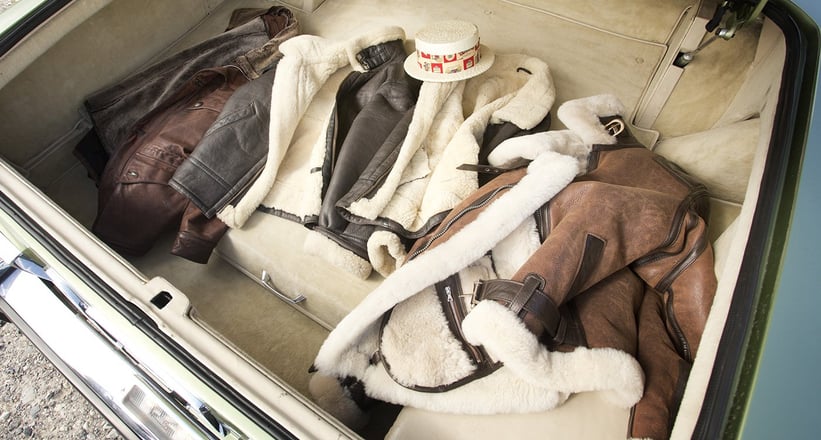
But this is no tank. Far from it, in fact. While it certainly has an imposing presence, Frua’s lines exude pure elegance – although they took their time to work their way off his sketchbook and onto the donor chassis. Due to the Anglo-Italian language barrier between Frua and Rolls-Royce, and some late design alterations from the Consul (including a request for the familiar grille and front end to be angled forwards), the car took almost two years to complete. When it was finally delivered, though, it represented an automotive masterpiece: it had clean lines with a gentle kink over the rear arch, butterfly bonnet-openings, and headlamps that would rotate into action on demand.
Worth the wait
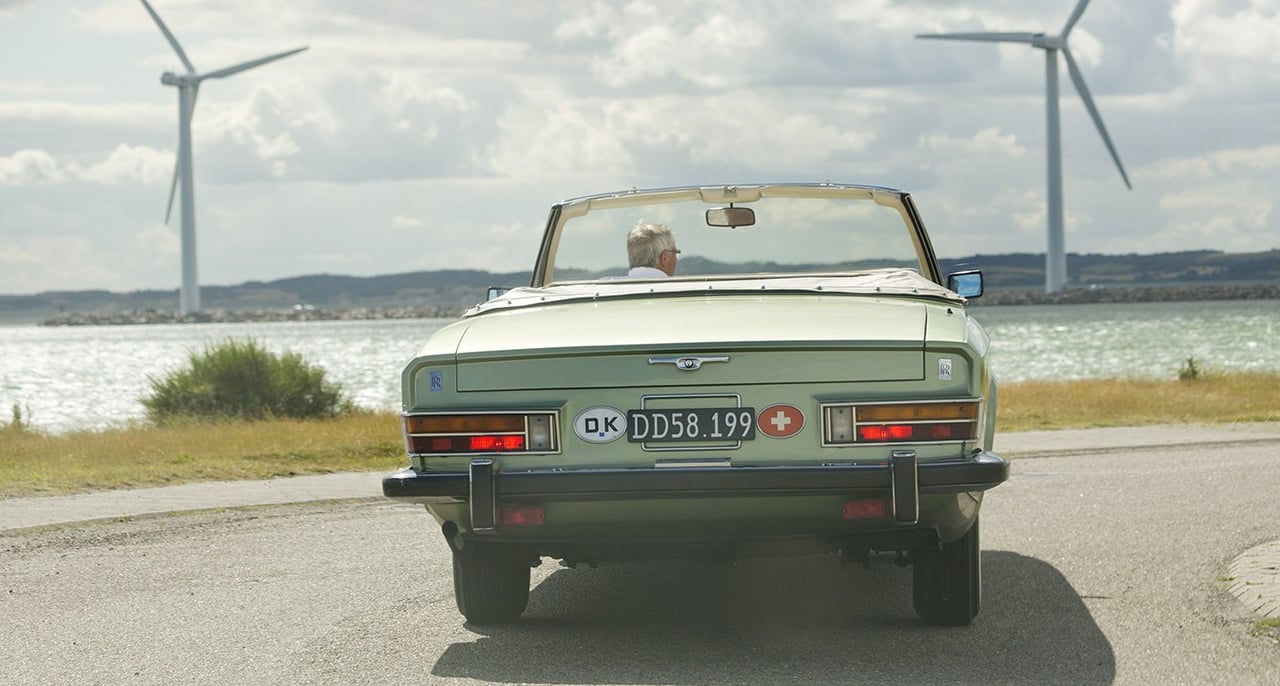
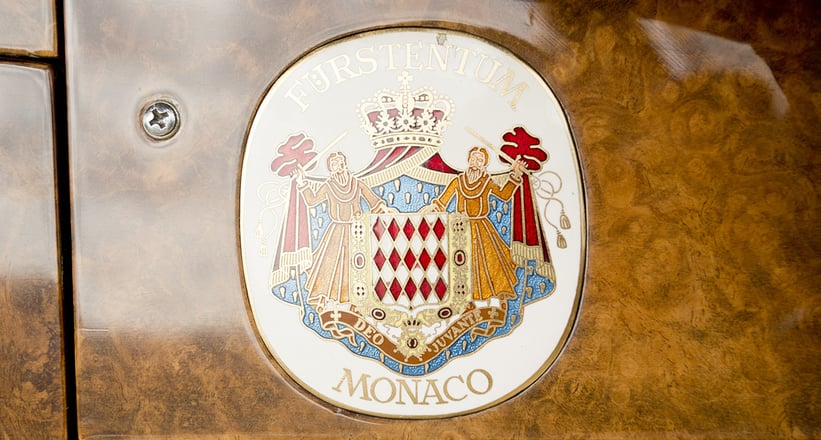
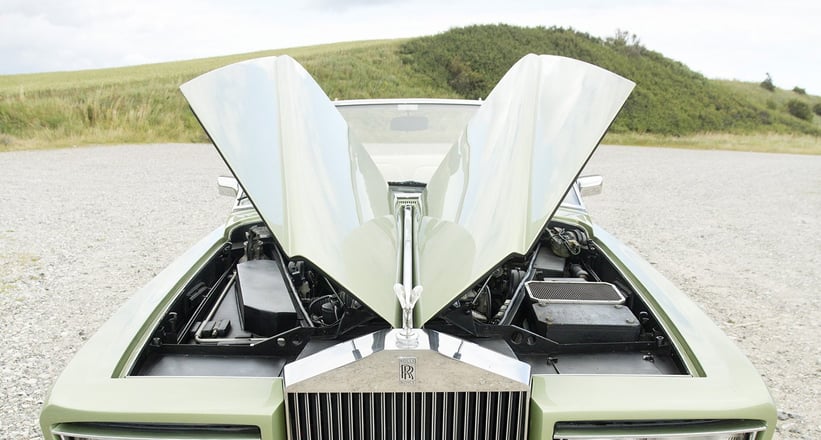
In addition, the Consul also specified pale green paintwork, an abundance of off-white leather and a number of bespoke touches, including his initials embossed on the steering wheel hub and a plaque of the Monaco coat of arms embedded in the dashboard. He also specified a Rolls-Royce logo to be added above each tail-light. Despite expressing displeasure at the delays in completing the car, the Consul was ultimately delighted with his stately drophead coupé, keeping it until 1997.
The unique 1973 Rolls-Royce Phantom VI Cabriolet by Frua will go to auction as part of the Frederiksen Collection, to be sold by Bonhams on 26 September at the Danish collector’s 16th Century manor.
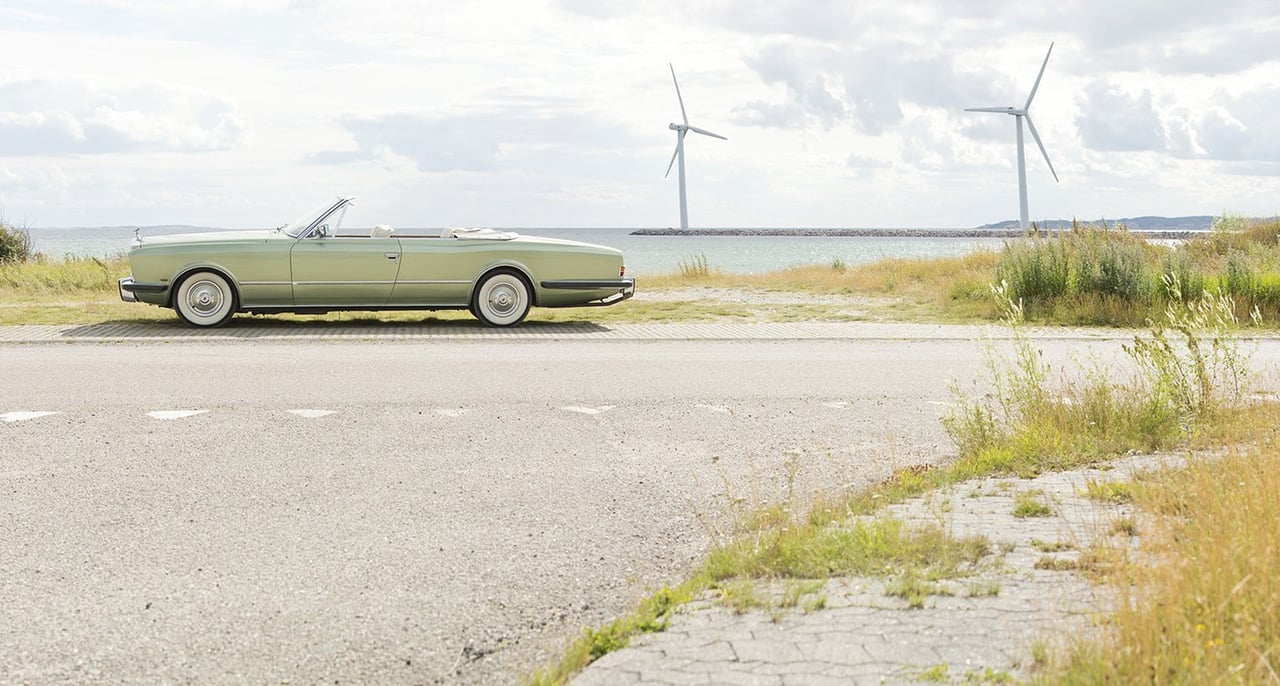
Photos: Bonhams
Inscription à :
Articles (Atom)

